-
Posts
44,957 -
Joined
-
Last visited
Posts posted by Jazzy Jan
-
-
I don't care that people don't like Meghan or Harry as their opinion and right but still shocked at the absolute HATRED people have for them. But then again, when such ""respectable wonderful media outlets " such as the Daily Mail, Murdoch papers, Fox news, Sky news etc spend so much time hating them - everyday there is hate articles on them, well I can understand why. Madonna fans should realise these exact same media outlets ie trashy, misogynist publications also have hated and slandered Madonna relentlessly for years and still do. As said before, Meghan receives more hatred then peodiphiles, murderers, fascists etc in the press and that is scary.
-
Darren Hayes - agree entirely with his tweet below
Why the FUCK isn't the slaughter of women and protesters in IRAN the number one news story on every news channel today and every day while this is happening?
-
First detected merger of black hole and neutron star
-
The clearest photo of Mercury ever taken
-
James Webb Telescope Captures ‘Clearest View’ of Neptune’s Rings in Decades
-
Hubble Captures a Starry Scene A glittering multitude of stars in the globular cluster Terzan 4 fills this image from the NASA/ESA Hubble Space Telescope.
-
A supermassive black hole in the center of Messier 87 (M87), an elliptical galaxy 55 million light-years from Earth. This black hole is 6.5 billion times the mass of the Sun.
-
Cyclones at Jupiter's North Pole
-
The clearest photo of Mercury ever taken
-
James Webb Telescope Captures ‘Clearest View’ of Neptune’s Rings in Decades
-
Are the protests in Iran just doomed to flare and then be crushed?
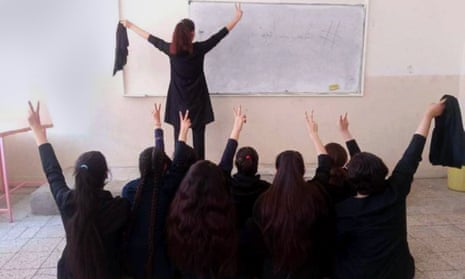
“This is not a protest anymore. This is the start of a revolution,” chanted a group of students outside the science department of Mashhad University, as the unprecedented protests in Iran over the death of Mahsa Amini continued into their 18th day on Monday.
That assessment, at least until recently, was not shared by Washington or European capitals. Expressions of support have been issued by the White House, some sanctions imposed and vague promises to loosen the Iranian regime’s blockade of the internet made. But overall the Biden administration has assessed this uprising as doomed to flare and then be crushed under the boots of the Revolutionary Guards. That after all is the history of the Islamic Republic of Iran. The baton, censorship and the police cell has a long and successful track record of violently quelling dissent.
Overseen by the 83-year-old supreme leader, Ayatollah Ali Khamenei, the Middle East’s longest serving ruler, it seems implausible that Iran’s deeply entrenched conservative leadership would abandon its normal instinct for a security response. It has worked in the past.
In July 1999, demonstrations by University of Tehran students sparked by the closure of a reformist newspaper linked to the then president, Mohammad Khatami, turned the capital into a battlefield. The security services went through the dormitories picking up ringleaders, and after six days, the protests were crushed. Many of the students remained in jail for up to six years and their demands for a free press and less screening of parliamentary candidates were ignored.
The women’s rights protests of 2005 and 2006, including the One Million Signatures campaign in support of legal equality, eventually foundered after more than 50 of its members were arrested and many left for exile, worn down by state harassment.
Again, in 2009, after the apparent rigging of a presidential election result, the Green movement spontaneously took to the streets, three-million strong, under the slogan “where is my vote?”. The confrontation was symbolised by the death of 26-year-old Neda Agha-Soltan, an aspiring musician, who was shot by a sniper as she stood at the edge of a protest. A mobile phone video that captured her dying on the pavement circulated the world in much the same way as the picture of Amini on a hospital bed. It took the state six months, but the protests became more sporadic as they were crushed through mass arrests, show trials and the killing of scores of middle-class demonstrators. In forced confessions on TV, the protesters had to admit they had been in league with the US.In 2019, the security services shot dead as many as 1,500 people when downtrodden working-class Iranians protested after the sudden tripling in petrol prices.
So if the past is a tutor, it is easy to write the obituary of this round of protests.
The arrests have already started, including of influential journalists such as the comment editor of Shargh newspaper and the reporter that first broke the story of Amini’s custody. The scale of the crackdown is disputed, but it is reported that in Zahedan in Sistan and Baluchestan province as many as 57 have died after protests over the police rape of a girl while in northern Iraq camps Tehran said hosted Kurdish opposition groups were indisputably strafed by its drones. The fact that official sources say 400 students in the Greater Tehran area alone have been released after questioning shows the scale of the round-up.
Khamenei used the old playbook to claim the riots were being created by familiar villains, the US and Israel. The UK ambassador to Tehran was also summoned, accused of fermenting the protest. Every effort is being made in the media to separate the protesters from a legitimate concern about the death of Amini, portraying them as either western agents or intoxicated by the internet. The interior minister has criticised the protest slogan “woman, life and freedom”, derived from Kurdish liberation movements, saying those chanting it seem to see freedom in the nakedness and shamelessness of women.
Yet Iran has this capacity to surprise. Any reading of The Pride and the Fall, Anthony Parson’s self-reproachful account of his failure as British ambassador to Tehran to predict the toppling of the Shah of Iran in 1979, knows Iran can leave the closest observer dumbfounded.
Few would have expected these demonstrations to have lasted as long as three weeks, even if their scale, hard to judge from the west, waxes and wanes. And it appears as if the Iranian leadership is caught off balance and nervous about the way its legitimacy is being challenged by this new phenomenon of a leaderless unarmed revolution, which is even drawing in schoolchildren.
There are many explanations for this. Reformist voices have warned the regime to tread carefully. During a discussion among 100 university professors at the University of Tehran on Sunday, the former foreign minister Mohammad Javad Zarif said: “It is wrong to think that people can be ignored. You cannot rule with violence.” ProfSadegh Zibakalam, who has challenged the regime’s line on a number of topics, has demanded to know who gave the order to send “militiamen in plain clothes” to attack and beat students at the elite Sharif University of Technology in the heart of Tehran.
Many parents rushed to the university when the security services threatened to run amok on Sunday and 65 professors said in a statement that Iran’s yyoung people had a right to be angry about the oppression inflicted on them. A galaxy of artists, football stars and Olympic wrestlers have found ways to show their sympathy with this new generation.
The protesters are tech-savvy, and despitethe regime’s best efforts to shut down the internet in Iran, videos of pop-up protests and police brutality pour on to social media and the Farsi language networks that broadcast into the country, including Iran International and the BBC. The revolution, if that is what it is, will be televised.
But above all, it is the leadership role taken by young women, some chanting death to Khomenei, that has confused Iran’s deep state and made it unsure how to respond.
In the past, the regime has had no compunction punishing feminism as a western corruption. Figures such as Shahla Sherkat, the editorial director of Zanan for 16 years, has been repeatedly harassed for publishing articles about Islam and women’s rights, as well as the mandatory hijab. The women’s wing in Evin prison is a living monument to the repression of women’s rights.
The hijab has become a central symbol of revolutionary morals for the regime. Ayatollah Khomeni, Iran’s first supreme leader, once said: “If the Islamic revolution is to have no other result than the veiling of women, then that is enough for the revolution per se.”
The current administration has taken that message to heart. In August, Iran’s Headquarters for the Promotion of Virtue and Prevention of Vice (Setad-PV) even published a 119-paged paper detailing the Islamic Republic’s hijab policy. The way that policy has been enforced has been the spark.
Women say they resent the clerical establishment deciding women are not just in need of protection, but also a threat to male honour. “From a young age, girls internalise the concept that there is something fundamentally sinful and shameful about their bodies,” wrote Ava Homa, an Iranian Kurd and the author of Daughters of Smoke and Fire. “The veil I had to wear was a symbol of alienation from others as well as from myself.”
She said modern Iranian women wanted “to choose what to wear and what not to wear, to decide what to do and what not to do”.
Kharazmi added: “For 40 years, people have been facing restrictions on having a party, being together, celebrating and being happy, and these restrictions have been piled on top of each other and have manifested in the form of protests. In fact, these protests are not only the protest of this generation, but a symbol of all the limitations that have been created in the political and social context over many decades.”
The Iranian poet and scholar Fatemeh Shams tried to pin down what Khamenei is confronting. It is a much more radical citizen-based politics that links it to transnational projects across the world, such as Black Lives Matter, she told CNN and unlike the Green Movement, it is not yet about cheated votes.
“This generation is very different from the 1980s. Their imagination and aspirations are very different,” Shams said. “My generation could never imagine going to the streets to make a bonfire of our veils. This is an act of political suicide that the Islamic Republic is committing by targeting this generation.”
-
So sad to see that Bolsonaro is still very much in the race. Lula did not get an outright majority of 50 % so heading for a run off.
-
This is heartbreaking. Women in Iran protesting in 1979 about enforced hijab wearing and their basic rights being taken away. So infuriating.

On 8 March 1979, more than 100,000 women gathered on the streets of the Iranian capital to protest against the new Islamic government’s compulsory hijab ruling, which meant that women would henceforth be required to wear a headscarf when away from home.
The protest was held on International Women’s Day, and the images show women from all walks of life — nurses, students, mothers — marching, smiling, arms raised in protest.
In the Islamic Republic of Iran, Ayatollah Khomeini severely curtailed rights that women had become accustomed to under the shah. Within months of the founding of the Islamic Republic of Iran, the 1967 Family Protection Law was repealed.
Female government workers were forced to observe Islamic dress code; women were barred from becoming judges; beaches and sports were sex-segregated; the legal age of marriage for girls was reduced to 9 (later raised to 13); and married women were barred from attending regular schools.
Almost immediately women protested these policies. The Islamic revolution is ideologically committed to inequality for women in inheritance and other areas of the civil code; and especially committed to segregation of the sexes. Many places, from “schoolrooms to ski slopes to public buses”, are strictly segregated.
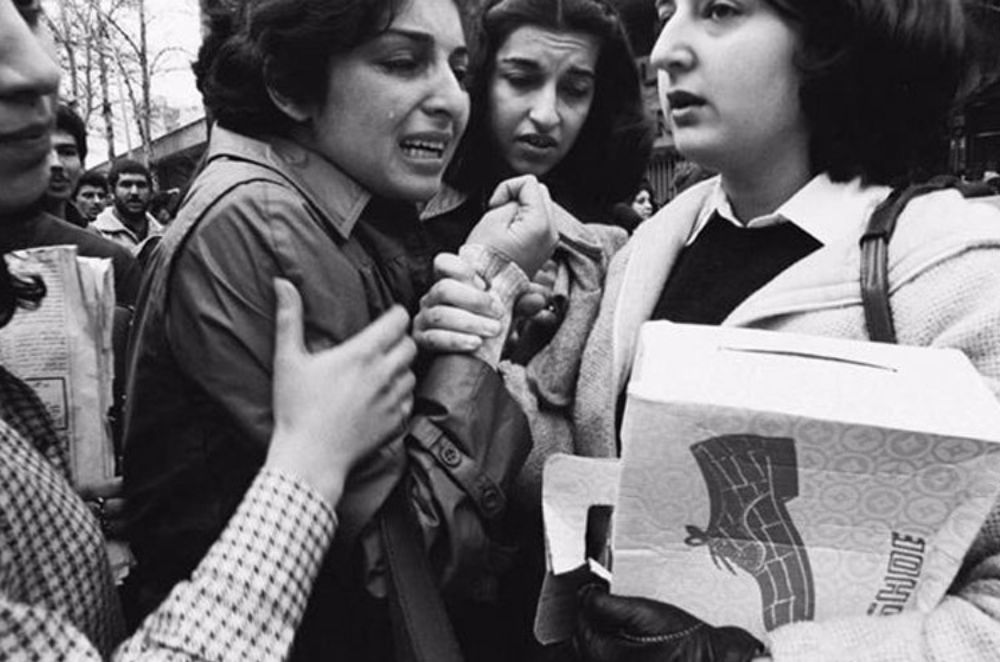
“Bad hijab” ― exposure of any part of the body other than hands and face – is subject to punishment of up to 70 lashes or 60 days imprisonment.
In April 2007, the Tehran police, (which is under Supreme Leader Ali Khamenei’s supervision), began the most fierce crackdown on what is known as “bad hijab” in more than a decade.
In the capital, Tehran thousands of Iranian women were cautioned over their poor Islamic dress and several hundred were arrested.
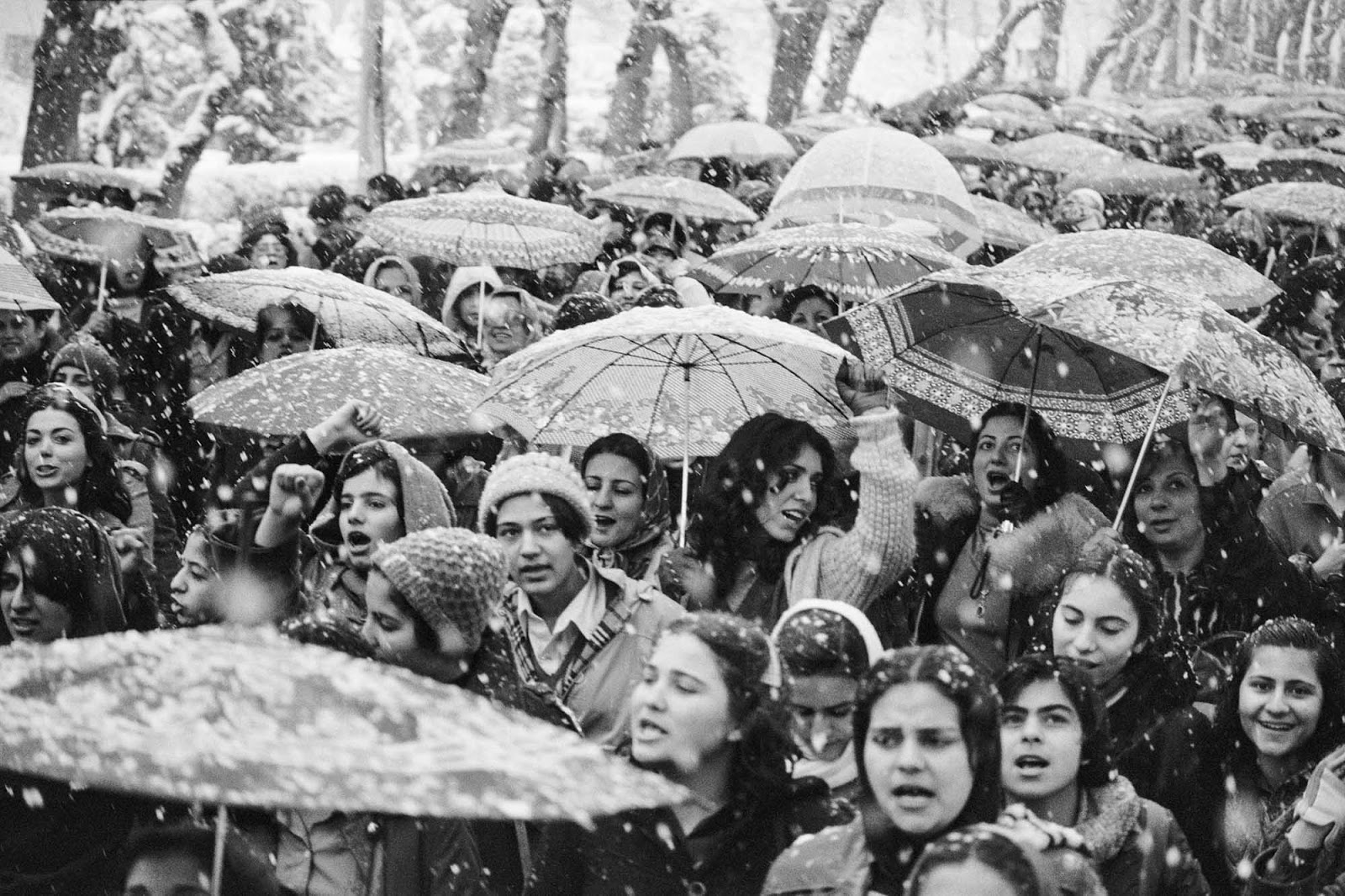
-
Iranian riot police clash with students during protests over Mahsa Amini's death in custody
Iranian security forces have clashed with students at a prominent university in Tehran, according to reports on social and state media.
The reported violence is the latest sign of a deadly clampdown on nationwide protests ignited by the death in custody of a young woman.
The anti-government demonstrations, which began at 22-year-old Mahsa Amini's funeral in the Kurdish town of Saqez on September 17, have spiralled into the biggest show of opposition to Iranian authorities in years, with many people calling for the end of more than four decades of Islamic clerical rule.
Activist Twitter account 1500tasvir, which has about 160,000 followers, posted several videos showing Sharif University, traditionally a hotbed of dissent, surrounded by dozens of riot police.
One of the videos showed security forces firing tear gas to drive the students off the campus and the sound of what appeared to be shooting at a distance could be heard.
Another video showed security forces chasing dozens of students trapped in the university's underground parking. The account said dozens of students had been arrested.
Iranian state media described "reports of clashes" at the university and said the country's science minister visited the campus to check on the situation.
Reuters could not independently verify the events at the university.
Students had been protesting at numerous universities on Sunday (local time) and demonstrations were held in several cities such as Tehran, Yazd, Kermanshah, Sanandaj, Shiraz and Mashhad, with participants chanting "independence, freedom, death to Khamenei," earlier social media posts showed.
The protests have not abated despite a growing death toll and the crackdown by security forces using tear gas, clubs, and in some cases according to videos on social media and rights groups, live ammunition.
Iran Human Rights, a Norway-based group, said in a statement "so far 133 people had been killed across Iran", including more than 40 people it said died in clashes last week in Zahedan, capital of the south-eastern Sistan-Baluchistan province.
Iranian authorities have not provided a death toll, while saying many members of the security forces have been killed by "rioters and thugs backed by foreign foes".
Last week state television said 41 people had been killed, including members of the security forces.
Iran's Supreme Leader, Ayatollah Ali Khamenei, has not commented on the nationwide protests, which have spread to Iran's 31 provinces, with all layers of society, including ethnic and religious minorities, taking part.
Ms Amini's death and the crackdown have drawn international criticism of Iran's rulers, who in turn have accused the United States and some European countries of exploiting the unrest to try to destabilise the country.
Iranian state media shared a video of pro-government students, who gathered at the Ferdowsi university in Mashhad, chanting: "The Islamic republic is our red line."
Earlier on Sunday, Iranian members of parliament chanted, "Thank you, police," during a parliament session, in a show of support for the crackdown on the protests.
Iran's morality police, who enforce the country's strict dress code, arrested Ms Amini in Tehran on September 13 for "unsuitable attire". She died three days later in hospital after falling into a coma.
The lawyer for Ms Amini's family, Saleh Nikbakht, told the semi-official Etemadonline news website that "respectable doctors" believed she was hit in custody.
The autopsy report and other medical details have not been released, but Ms Amini's father said he saw bruises on her leg and that other women detained with her said she was beaten.
Iran's police authorities say Ms Amini died of a heart attack and deny she was beaten to death in custody.
The country's hardline president, Ebrahim Raisi, has ordered an investigation into Ms Amini's death. He said last week that a forensic report would be presented in the "coming days".
Amnesty International on Friday reported that hundreds were injured and thousands arrested in the protests.
State media said at least 20 people were killed in the Zahedan clashes, blaming a separatist group from the Baluchi minority for starting a shootout in the city.
-
3 hours ago, Bitch I'm Christian said:
That's why I'm so glad voting is compulsory in Australia. It means elections are won here by appealing to the middle rather than extremes. In the most recent election, politicians pitching to conspiracy theorist alt-right loonies actually ended up worse off than before.
Agree totally. I have no patience anymore with Australians who whinge about their loss of “freedom” because they have to vote. Boo hoo. We all know that extremists always vote so if people don’t want fascists, conspiracy theorists or nutcases in power, they need to go out and vote for the opposite.
@Bitch I'm Christian and all other Australians on this form, we dodged a bullet completely with Morrison getting voted out and I also applaud the conservatives who completely rejected far right candidates and voted for independents instead. Despite all the Murdoch propaganda. The rise of fascism in the world is terrifying.
-
2 hours ago, Kim said:
Not this nutter who recently intimated that France was an enemy of the UK now sending her congratulations to this far right trash?...
Good grief.

-
On Sept. 16, 2022, Mahsa Amini, a 22-year-old Iranian woman, died in Tehran, Iran, while in police custody. Amini was arrested by the Guidance Patrol, the morality squad of the Law Enforcement Command of the Islamic Republic of Iran that oversees public implementation of hijab regulations, for not wearing a hijab properly.
Soon after the news of her death was broadcast and a photograph emerged on social media of her lying in a Tehran hospital in a coma, people throughout the country became enraged.
Amini’s death starkly illustrated the systematic violence of police and highlighted particularly the brutality of the regime towards women and minorities. She was Kurdish, a member of one of the most oppressed minority ethnic groups in Iran.
All Iranian women who are routinely humiliated because of their gender can empathize with her. But Kurds and Kurdish women in particular understood the political message of her death at the hands of police and the state’s subsequent violent response to the protests.
The huge wave of protests in Iran following Amini’s death represents a historic moment in Iran. People have taken to the streets shouting slogans against the compulsory hijab and denouncing Iran’s Supreme Leader, Ayatollah Khamenei.
Protests have raged in 31 provinces, including Kurdistan and Tehran as well as cities such as Rasht, Isfahan and Qom, among Iran’s most conservative communities. Dozens of people have been killed by security forces and hundreds more have been arrested.
The Girls of Revolution Street
Although the current uprising may seem unprecedented, it is in fact part of a deep-rooted and longstanding resistance movement by women in Iran.
In what is widely seen as a punishment to the hundreds of women who participated in the anti-regime protests leading to the Iranian Revolution of 1979, the hijab became compulsory two years later in 1981.
Consequently, publicly removing hijabs became a challenge to the regime in Iran.
Decades later, in 2017, Vida Movahed climbed onto a platform on Enghelab (Revolution) Street in the centre of Tehran, took off her headscarf and waved it in the air as a sign of opposition to compulsory hijab.
She was followed by other women and the movement quickly became known as The Girls of Revolution Street or Dokhtaran-e Khiaban-e Enghelab.
The Girls of Revolution Street represented a fundamental challenge by younger women to Iran’s compulsory veiling laws. Their actions resulted in an increase in the number of women who braved the streets without hijab in defiance of the state.
Unsurprisingly, when religious hardliner Ebrahim Raisi became president in the contested 2020 election, the message was clear: Women would be further oppressed.
Zan, Zendegi, Azadi: Woman, life, freedom
This recent uprising is a link in a chain of protests that together have the potential to bring about fundamental change in Iran.
It began with the pro-democracy Green Movement in 2009 followed by popular uprisings in 2018 and 2019. The Green Movement was largely peaceful, but the uprisings grew increasingly more confrontational with each wave of repression.
Women have been in the lead in all these protests, posing a real challenge to the regime. They’re the leaders of transformative change, the vanguard of a potential revolution, challenging the legitimacy of the current government..
The current protests are focused on two main demands: dignity and freedom. Both have been absent from political life in Iran, and both have a prominent presence in almost all slogans during this uprising, particularly “Woman, Life, Freedom.”
The recent uprising makes it clear that the demand for radical change in Iran today is strong and significant.
With every wave of protest, the desire for freedom gets stronger, the voices get louder and success is within reach. Once again, Iranian women are at the forefront of demanding transformative change.
With the strong support this time of men, political and ethnic minorities and other disenfranchised groups, they may be leading their country closer to a freer and more just society.
-
How the death of a Kurdish woman galvanised women all over Iran
At first, the killing of Mahsa Amini by the morality police triggered protests only among a minority – but anger with the regime soon spread
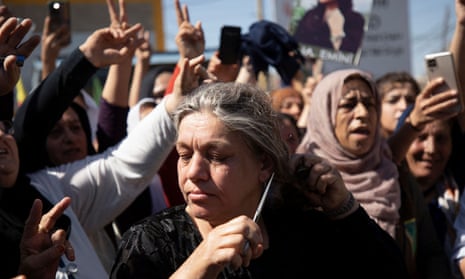
When a young Kurdish woman, Mahsa Amini, died in regime custody 10 days ago, Kurdish corners of Iran were the first to erupt; their anger at leaders they say have long oppressed them had an incendiary effect in their towns and cities.
The death of the 22-year-old, who refused to wear a hijab on a visit to Tehran, quickly became a potent symbol of defiance for a minority group that had long harboured nationalistic ambitions, which rarely stayed hidden, and often eschewed the values of the country’s hardline leaders.
But something happened along the way to what could have been a Kurdish nationalist uprising; Iranians from across the country fast shared in the outrage of the death of Amini and the collective indignity it represented to a greater population. Soon protesters on the streets of most of the country’s provinces were testing the limits of state forces. “It is not an Iranian revolution, or even a Kurdish revolution,” said Rozhin, 25, from the Kurdish city of Kermanshah. “It is a women’s revolution.”
Demonstrations against the theocratic state’s stance towards women show little sign of slowing down in many parts of Iran. Women, who bear the brunt of state constraints, have been particularly vocal, tearing down pictures of Grand Ayatollah Ali Khamenei and the assassinated general Qassem Suleimani. Both acts were unthinkable even months ago, but so too was the spectacle of large numbers of women – Kurdish, Persian and minorities – taking to the streets without hijabs.
“It’s now not about Kurdish movement, neither about Persians,” said Karim, 27, from the town of Bokan. “It’s about 85 million humans who are fighting back for their rights, socially, economically and in every aspect of life. One week ago a Kurdish girl was a stranger in the capital of Iran and now her face is known everywhere around the globe. This is not about national movement – this is beyond that; it’s about women, and it’s about our basic human rights.
“At this moment, every individual is thinking about fundamental aims and problems to be solved. But I do not guarantee that after one year the Kurds have another way of thinking about Persians.”
Kurds in Iran account for roughly 10% of the country’s population, and make up roughly a quarter of the greater Kurdish presence in the Middle East, scattered between west and eastern Iran, northern Iraq, northern Syria and southeastern Turkey. A century after the breakdown of post-first world war Ottoman boundaries, there is no Kurdish state, and numerous groups vie among populations to claim leadership roles among what remains a fractured population whose search for a homeland has remained elusive.
Five years ago this week, Iraq’s Kurds held a referendum on statehood, which was passed overwhelmingly. However, within days, Iraq’s army, led by powerful militias and directed by Suleimani, pushed north to seize the oil city of Kirkuk and retake much of the land seized by Kurds after the ousting of Saddam Hussein in 2003.
Ever since, there have been few moments to galvanise Kurds in either Iraq, or Iran –until Amini’s death in the custody of Iran’s morality police. The feared enforcers have become central targets of the demonstration and held up as examples of where Kurds diverge from the central government.
“There is no doubting the Kurdish revolutionary fervour that Mahsa Amini’s death has sparked among Iran’s long-oppressed Kurdish population,” said Ranj Aladdin, senior fellow at the Middle East Council on Global Affairs. “But her brutal death has come to symbolise something much bigger than the Kurdish cause in Iran that strikes at the very heart of the political and ideological system that underpins the Islamic Republic.
“While her name will be exploited by other opponents of the regime, for the first time since 1979 the Kurdish cause in Iran has become intertwined with that of other oppressed communities. What that means for Kurdish human rights in the immediate future remains to be seen, but – if and when the regime survives this uprising – it is the Kurds who will most likely be in the cross-hairs of its violent response.”
Rozhin says the aftermath of the demonstrations is not being considered, for now. “Women are struggling so much with so many problems. It’s obvious that people do not only have an issue with the hijab, but the system of government. They have changed the definition of Islam. They are killing many people. They are denying every single right of women. They don’t allow us to choose. It’s not only about the hijab issue – it’s about our right to make choices.”
Another woman, a resident of Tehran who refused to be named, said the protests had electrified women across the country. “It’s happening in ways that have never been known before. Even if we don’t win, we’ve already won in many ways. The state cannot ignore us now. Our stance has made them weaker.”
-
So terrifying. Again, history repeating itself. Who would of thought the fascists would rise in Europe again but here we are. They are even gaining power and government.
-
On 9/17/2022 at 10:21 PM, Michael. said:
As an Australian I can confirm the Queen was hugely popular in Australia. Even amongst republicans she was well liked and respected.
Yes, the Queen herself was very well respected and liked in Australia. Have heard so many hard core republicans saying that when they met her, she knew so much about Australia and had a great sense of humour. She was the most liked and respected of all the Royal family by a country mile.
-
9 minutes ago, Kim said:
Couldn't agree more. I'm the furthest thing from a royalist, but if you can't see that the utter vitriol and hatred this woman gets is out of control and for ONE very obvious reason, then...
What was it I read?... about 29 headlines alone from the Daily Mail in one day this week, completely destroying everything about her - and as I pointed out in the other thread, guess who Charlie's head of communications is? A senior Daily Mail hack, the same paper lambasting his daughter in law. It's really quite sickening.
Yes, same here. I am not a royalist either but there are even articles trashing her for daring to walk slightly in front of him and for daring to hold his hand. It is just hateful nonsense and sickening.
-
People will make up their own minds about Meghan and I respect their personal opinions. It is just the continual hateful articles from the tabloid media, vapid morning tv shows and magazines about her that are so telling. What is also telling is before the media started hating on Meghan so much, they were hating on Kate - remember the whole Waity Katy stuff. While Prince Andrew was best buddies with Epstein and he has not received a quarter of the vitriol and hatred Meghan gets. Why is it always young women who cop such intense hatred by the press ? Especially young women who have a mind of their own.
-
This is such a nothing story. If it is true ( not confirmed) it actually makes complete sense anyway and not in a sinister way. Kate will be the future Queen and the royal Jewels will stay in traditional royal succession. What most would expect. Of course the media turn it into another attack on Meghan.
I read multiple hate articles on Harry and Meghan every week in the Murdoch Herald scum paper at work. All from far right excuses for writers such as Andrew Bolt, Rita Panihi and co. The same writers who support Trump, defend the scum who chanted to hang Mike Pence and agree with the overturning of Roe v Wade. Who debunk climate change action etc. and never want wages for nurses, childcare staff and teachers etc to increase. Yet article after article viciously hating Meghan and Harry all the time.
-
2 hours ago, sotos8 said:
Swedish right prepares for power as PM accepts election defeat
Swedish election: The astonishing rise of the right-wing Sweden Democrats
Very frightening.


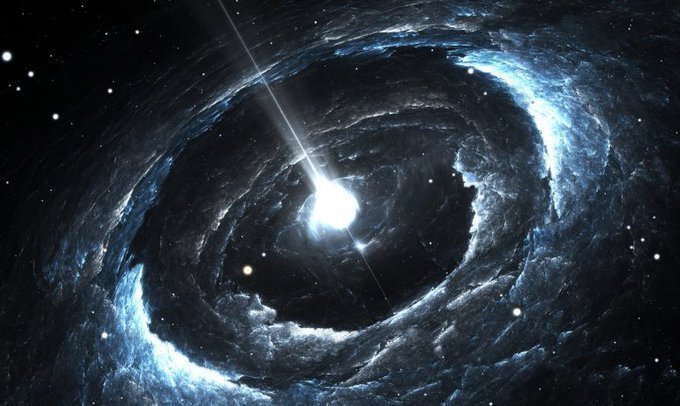



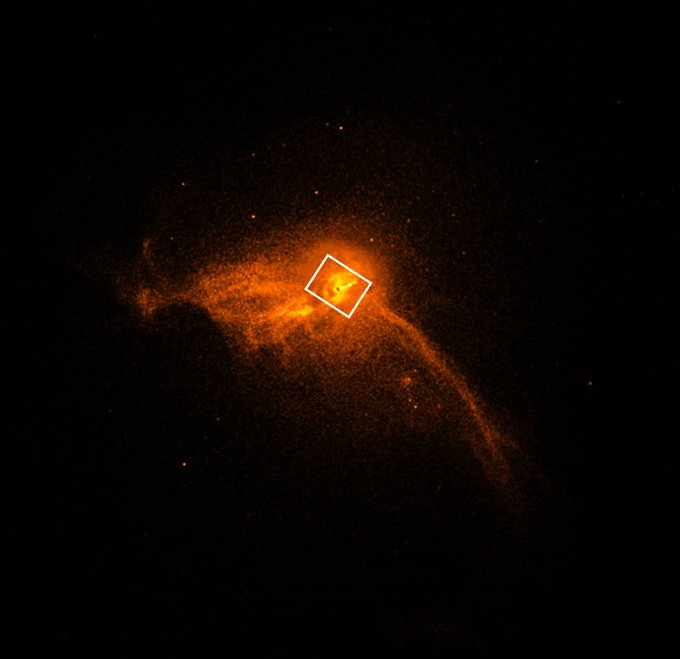
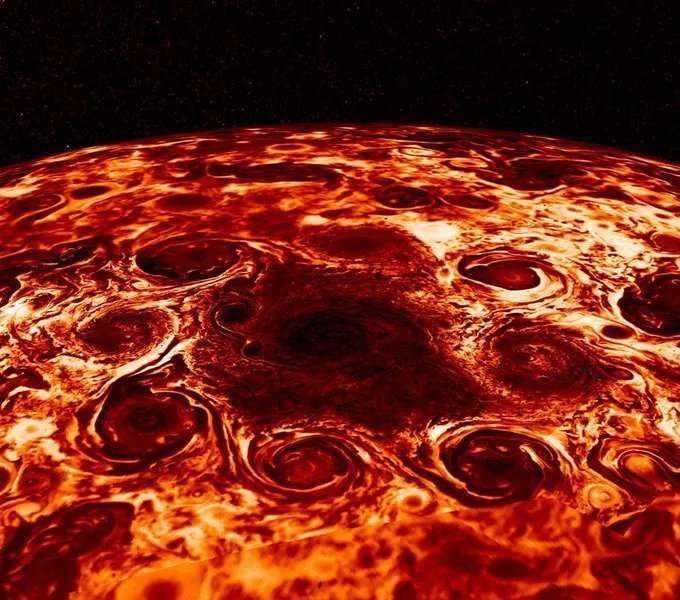
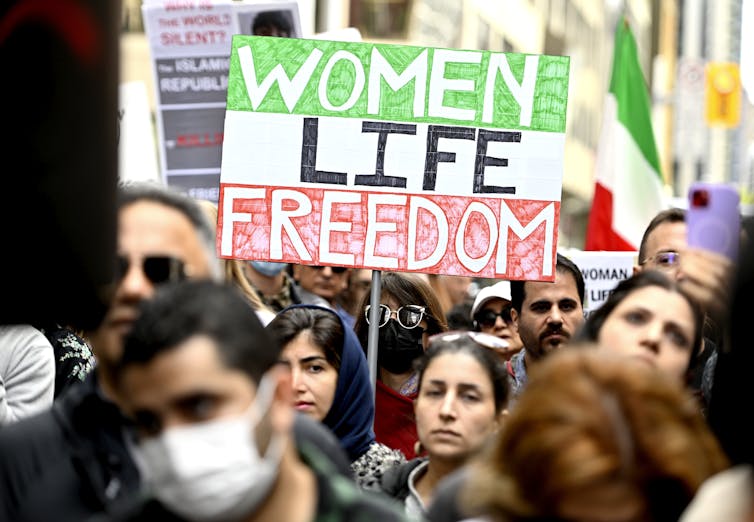
Brave woman of Iran
in Politics and World Events
Posted
Karbatal, it saddens and frustrates me greatly. Why does the media spend so much time on trivial issues that everyone jumps up and down about, yet is basically ignoring the plight of these brave women who are fighting for their basic human rights. Women who are being killed on mass now.
When discussing this at work the other day, I found that the majority of people knew nothing about it and when they checked it online, they were horrified and shocked that there was hardly any press about it.
Considering that half of the population is female, you would think this would be a HUGE story but it is way way down on the radar. Press in Australia - mainly Murdoch and other right wing press - would rather worry about hating Meghan Markle, worrying that a CEO of a football club in Victoria resigned from his job because he belonged to a way out fundamentalist church ( cue the whole loss of Freedom of speech for religious people etc outrage ) and worrying about high earners maybe losing their tax cuts promised in 2 years. Also, the CEO I mentioned actually was involved in a royal commission that cost him his job at the National bank 2 years ago because his bank was charging fees to dead customers that got the bank millions of dollars. But hey, he is now a great bloke because he is religious even though the controversary is because his specific church compared abortion to the holocaust and thinks being gay is a great sin. The outrage the Murdoch papers are pushing with this is astounding but not surprising,